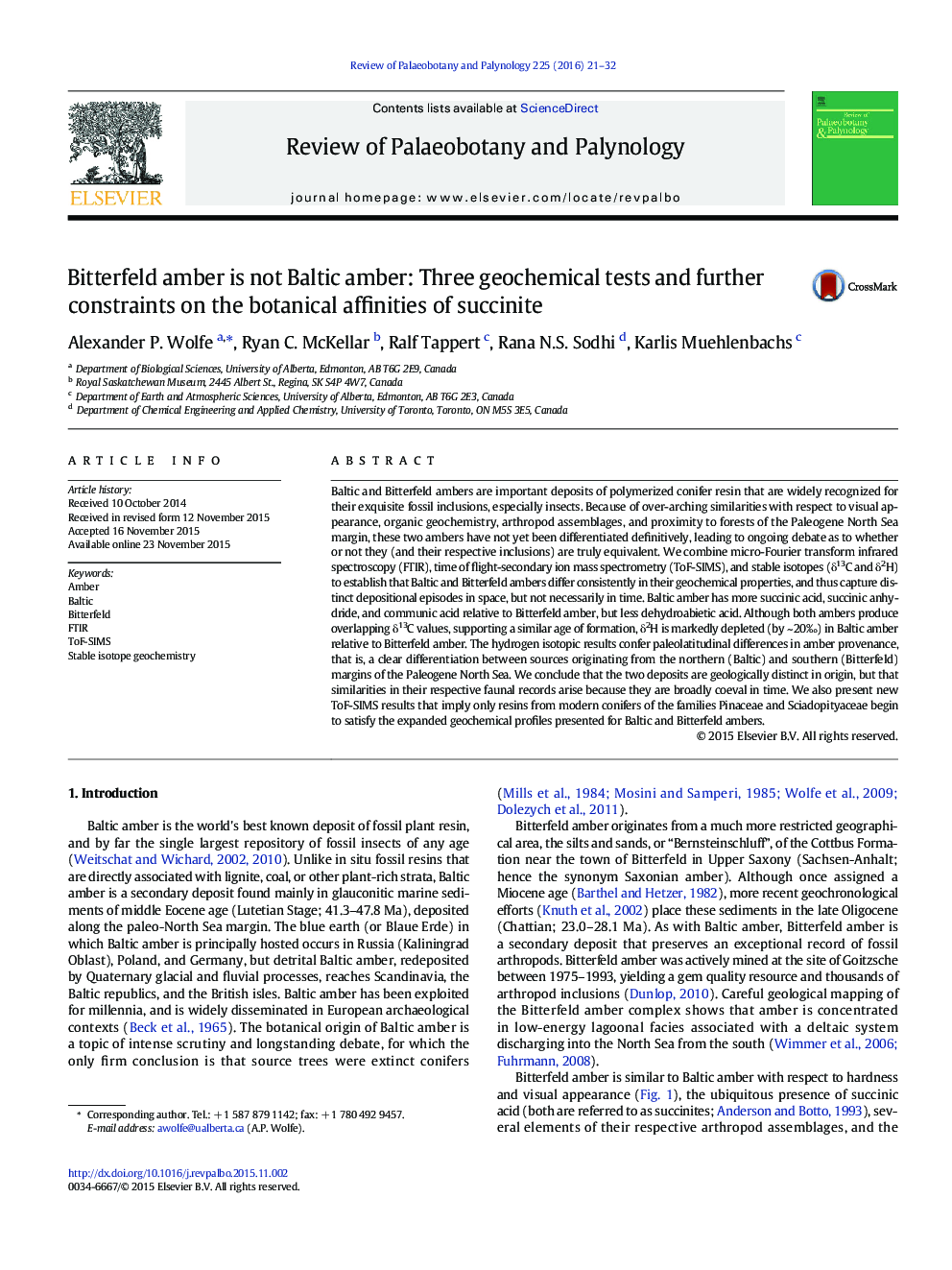| کد مقاله | کد نشریه | سال انتشار | مقاله انگلیسی | نسخه تمام متن |
|---|---|---|---|---|
| 4750104 | 1642472 | 2016 | 12 صفحه PDF | دانلود رایگان |
• Baltic and Bitterfeld ambers are differentiated conclusively using geochemistry.
• Hydrogen isotopes indicate that Baltic and Bitterfeld ambers have distinct sources.
• Carbon isotopes and insects suggest Baltic and Bitterfeld ambers are coeval in age.
• Pinaceous and sciadopityaceous resins share some properties of these ambers.
Baltic and Bitterfeld ambers are important deposits of polymerized conifer resin that are widely recognized for their exquisite fossil inclusions, especially insects. Because of over-arching similarities with respect to visual appearance, organic geochemistry, arthropod assemblages, and proximity to forests of the Paleogene North Sea margin, these two ambers have not yet been differentiated definitively, leading to ongoing debate as to whether or not they (and their respective inclusions) are truly equivalent. We combine micro-Fourier transform infrared spectroscopy (FTIR), time of flight-secondary ion mass spectrometry (ToF-SIMS), and stable isotopes (δ13C and δ2H) to establish that Baltic and Bitterfeld ambers differ consistently in their geochemical properties, and thus capture distinct depositional episodes in space, but not necessarily in time. Baltic amber has more succinic acid, succinic anhydride, and communic acid relative to Bitterfeld amber, but less dehydroabietic acid. Although both ambers produce overlapping δ13C values, supporting a similar age of formation, δ2H is markedly depleted (by ~ 20‰) in Baltic amber relative to Bitterfeld amber. The hydrogen isotopic results confer paleolatitudinal differences in amber provenance, that is, a clear differentiation between sources originating from the northern (Baltic) and southern (Bitterfeld) margins of the Paleogene North Sea. We conclude that the two deposits are geologically distinct in origin, but that similarities in their respective faunal records arise because they are broadly coeval in time. We also present new ToF-SIMS results that imply only resins from modern conifers of the families Pinaceae and Sciadopityaceae begin to satisfy the expanded geochemical profiles presented for Baltic and Bitterfeld ambers.
Figure optionsDownload as PowerPoint slide
Journal: Review of Palaeobotany and Palynology - Volume 225, February 2016, Pages 21–32
